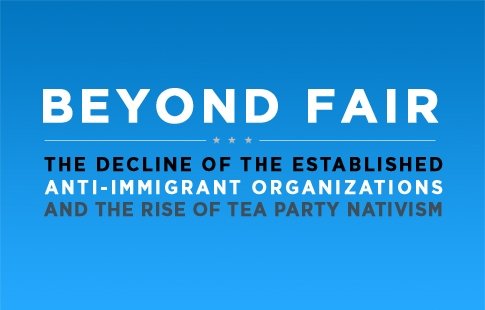Case Study: The Rise and Fall of the FIRE Coalition
The Federal Immigration Reform and Enforcement Coalition, or FIRE Coalition, emerged in the fall of 2005. It attracted activists less interested in lobbying Congress and writing letters and more interested in direct action protests and disruptions. They targeted immigrant day laborers and employers, companies that marketed to immigrants, and politicians they regarded as “un-American.” FIRE Coalition activists harassed day labor centers and shape-up sites with inflammatory protest signs and video cameras.
The FIRE Coalition also launched a number of web-based campaigns. Among these projects: WeHireAliens.com and SendTheTaxMan.com, targeted companies allegedly hiring undocumented workers; AbsolutelyNot.com, claimed to boycott the Absolute Vodka company for “anti-American and treasonous actions”; MillerBoycott.com promoted a similar boycott of Miller Brewing; and OperationBankrupt.com tried to start a boycott of Bank of America for giving bank accounts to undocumented immigrants. These campaigns generated controversy and media attention, which in turn helped the coalition groups attract new members.
By December 2006, the FIRE Coalition had expanded to 75 “teams” (local chapters) in 29 states. A year later, at the end of 2007, the group had grown to 110 teams in 34 states. By mid-2008, the number of teams swelled to 131 in 33 states, although its pace of activism had already started to slow. It became the largest constellation of anti-immigrant groups, with 137 local chapters in 2010.
The FIRE Coalition burned out almost as quickly as it ignited. IREHR’s analysis shows that in 2011 only 10 of the FIRE Coalition groups in nine states were still active. Moreover, the level of activity of the remaining groups declined significantly.
This chart indicates the number of events that FIRE coalition groups have held from 2006 to 2008.[22]
It is difficult to assess the exact cause or causes of the sharp decline in numbers, money, and membership. One reason may be the economy. As the economy soured in 2007 and 2008, many middle class Americans had less money for discretionary spending of all types. Contributions and membership dues and activities might have suffered as result.
Another factor may have been the extent that the Nativist Establishment was a victim of its own prior success. For more than a decade it has had veto power over the legislative agenda on immigration. At the federal level, they have effectively stymied any effort at comprehensive reform. As a result, raids and deportations by federal agents have remained at high levels. In the states, it has helped write and then support legislation that is so onerous as to force undocumented immigrants (and Latinos generally) to pack up and leave. This approach, known internally as “enforcement through attrition,” has produced draconian legislation in Arizona, Georgia and Alabama. Indeed, a recent study by the National Conference of State Legislators showed that in 2011 there were 1,607 bills introduced in the 50 states this year, with 197 laws enacted and 109 resolutions adopted in forty-two states.[23]
Although some of this legislation has been drafted with the assistance of FAIR’s Immigration Reform Law Institute counsel Kris Kobach, who also serves as Secretary of State for Kansas, the established lobbies have become increasingly irrelevant over time. It is less necessary to give a platform to FAIR’s executive director Dan Stein, for example, when any number of congressional representatives and state legislators are making the same arguments.
Further, human rights groups have spent years exposing the “scientific” racists, the hard core white nationalists, the editor with a direct connection to a Holocaust denial organization, and others of a similar political vintage inside the Nativist Establishment that has marked them as outside of acceptable and responsible discourse.[24] John Tanton’s fixation with race and demography, along with other controversial statements by leadership figures has further sullied their interests. And the above-mentioned murders significantly damaged the whole cause.
Further complicating the situation: the institutional leadership of the Nativist Establishment fears its own grassroots. According to John Tanton, the one-time central figure in this constellation of organizations, “working with the grassroots is not easy.” He has fretted about a lack of control over grassroots groups, cited examples of a volunteer potentially violating IRS non-profit rules, and of another who claimed to have been abducted by space aliens. “The problem, as someone once pointed out is working with the grassroots without getting ‘grass stains,’ ” Tanton wrote.[25] As a result, the established organizations have hired few local leaders onto their national staffs. Institutional continuity is hindered as is the ability to capture new, more grassroots-oriented, shifts in public opinion. And the old-line groups have failed to harness new forms of anti-immigrant activity, particularly as they have emerged in the Tea Party movement.






